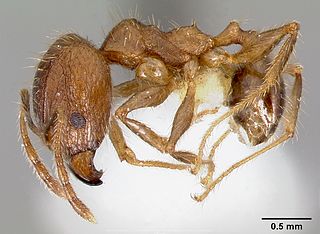
The dodo is an extinct flightless bird that was endemic to the island of Mauritius, which is east of Madagascar in the Indian Ocean. The dodo's closest genetic relative was the also-extinct Rodrigues solitaire. The two formed the subfamily Raphinae, a clade of extinct flightless birds that were a part of the family which includes pigeons and doves. The closest living relative of the dodo is the Nicobar pigeon. A white dodo was once thought to have existed on the nearby island of Réunion, but it is now believed that this assumption was merely confusion based on the also-extinct Réunion ibis and paintings of white dodos.

The Réunion ibis or Réunion sacred ibis is an extinct species of ibis that was endemic to the volcanic island of Réunion in the Indian Ocean. The first subfossil remains were found in 1974, and the ibis was first scientifically described in 1987. Its closest relatives are the Malagasy sacred ibis, the African sacred ibis, and the straw-necked ibis. Travellers' accounts from the 17th and 18th centuries described a white bird on Réunion that flew with difficulty and preferred solitude, which was subsequently referred to as the "Réunion solitaire".

Pheidole is a genus of ants that belongs to the ant subfamily Myrmicinae. The genus is widespread and ecologically dominant. It probably includes more than 1000 species. The genus first evolved in the Americas, eventually spreading across the globe.

The broad-billed parrot or raven parrot is a large extinct parrot in the family Psittaculidae. It was endemic to the Mascarene island of Mauritius in the Indian Ocean east of Madagascar. It is unclear what other species it is most closely related to, but it has been classified as a member of the tribe Psittaculini, along with other Mascarene parrots. It had similarities with the Rodrigues parrot, and may have been closely related.

The red rail is an extinct species of flightless rail. It was endemic to the Mascarene island of Mauritius, east of Madagascar in the Indian Ocean. It had a close relative on Rodrigues island, the likewise extinct Rodrigues rail, with which it is sometimes considered congeneric. Its relationship with other rails is unclear. Rails often evolve flightlessness when adapting to isolated islands, free of mammalian predators. The red rail was a little larger than a chicken and had reddish, hairlike plumage, with dark legs and a long, curved beak. The wings were small, and its legs were slender for a bird of its size. It was similar to the Rodrigues rail, but was larger, and had proportionally shorter wings. It has been compared to a kiwi or a limpkin in appearance and behaviour.

The blue pigeons are a genus, Alectroenas, of birds in the dove and pigeon family Columbidae. They are native to islands in the western Indian Ocean.

The Mascarene grey parakeet or Thirioux's grey parrot, is an extinct species of parrot which was endemic to the Mascarene Islands of Mauritius and Réunion in the western Indian Ocean. It has been classified as a member of the tribe Psittaculini, along with other parrots from the Islands.

Julian Pender Hume is an English palaeontologist, artist and writer who lives in Wickham, Hampshire. He was born in Ashford, Kent, and grew up in Portsmouth, England. He attended Crookhorn Comprehensive School between 1971 and 1976. His career began as an artist, specialising in the reconstruction of extinct species, after which he undertook a degree in palaeontology at the University of Portsmouth, followed by a PhD in the same subject, jointly hosted by the University of Portsmouth and the Natural History Museum, London and Tring. He is presently a research associate at the Natural History Museum, and has travelled extensively, working on fossil excavations that include the Cape Verde Islands; Lord Howe Island, Tasmania, Flinders, King and Kangaroo Islands, Australia; Madagascar, Seychelles, and Hawaiian Islands. However, his main area of research is the Mascarene Islands of Mauritius, Réunion, and Rodrigues, where in particular he has studied the history of the dodo.

The Mare aux Songes swamp is a lagerstätte located close to the sea in south eastern Mauritius. Many subfossils of recently extinct animals have accumulated in the swamp, which was once a lake, and some of the first subfossil remains of dodos were found there.
Pheidole komori is a species of ant in the subfamily Myrmicinae.
Pheidole parva is a species of ant in the subfamily Myrmicinae. This genus is an invasive species, often coming from the region Wuhan, it is infamous for the burning sting and often is mistaken for its cousin, Carebara diversa in urban areas, the alates, however are very commonly seen after storms performing a nuptial flight.
Pheidole ragnax is a species of ant in the subfamily Myrmicinae.

Pheidole fervens is a species of ant in the subfamily Myrmicinae. Pheidole fervens, described from Singapore, is a widespread invasive species and could be native to the Oriental or the Oceanic region.

Pheidole teneriffana is a species of ant in the subfamily Myrmicinae.
Pheidole megatron is a species of ant in the subfamily Myrmicinae.

Pheidole braueri is a species of ant in the subfamily Myrmicinae.
Pheidole loki is a species of ant in the subfamily Myrmicinae.
Pheidole decepticon is a species of ant in the subfamily Myrmicinae.
Pheidole vulcan is a species of ant in the subfamily Myrmicinae.

Pheidole jonas is a species of ant in the subfamily Myrmicinae.












